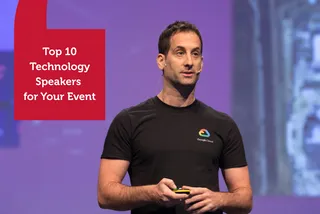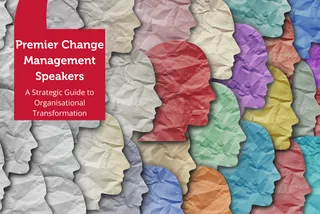Refine Search
Event Tips
Olga Nitschke We share 10 keynote speakers to manage change in your business who will help businesses adapt and transform to greater heights.
Total results: 1169
Blog
Olga Nitschke Selecting the right business motivational speaker requires strategic clarity on event objectives, a deep understanding of your audience, verification of authentic expertise, and cultural alignment. Speakers Corner's 7-step framework, combined with 20+ years of experience across 9,000+ speakers and 1,000+ annual events, ensures your leadership event delivers measurable business impact and lasting attendee engagement.
Event Tips
Olga Nitschke Technology continues to reshape the way we live, work, and connect. In 2026, conversations around AI, automation, data, and digital ethics are no longer niche but essential. Leaders are expected to understand not only what is possible but what is responsible, sustainable, and meaningful. The right speaker can help teams cut through the noise, see the opportunities ahead, and feel confident navigating technological change with clarity.
Blog
Olga Nitschke Change does not have to feel overwhelming. This guide shows how the right speaker can lift energy, build confidence and help teams take transformation in their stride. If you want practical ideas, fresh perspectives and a smarter way to approach change, this is a great place to start.
Event Tips
Olga Nitschke Corporate events have fundamentally transformed over the past few years, and the role of keynote speakers has never been more critical to event success. With organisational budgets under scrutiny and attendee expectations at an all-time high, choosing the right keynote speaker can be the difference between a forgettable gathering and a truly impactful experience that drives measurable business outcomes.
Event Tips
Olga Nitschke Customer service has evolved far beyond simply fixing problems. In 2025, the best organisations understand that great service is about building relationships, earning trust, and creating experiences that keep customers coming back. In a world shaped by technology, automation, and ever higher expectations, it is the human touch that makes the lasting difference.
Event Tips
Olga Nitschke In 2026, leaders are not only expected to understand the numbers but also the narratives behind them—the shifting markets, new technologies, and changing consumer behaviours that shape our economy.
Event Tips
Olga Nitschke We share 10 keynote speakers to manage change in your business who will help businesses adapt and transform to greater heights.
Event Tips
Olga Nitschke Business in 2025 is evolving at lightning speed. Leaders are juggling economic uncertainty, the rise of AI, shifting consumer habits, and an ever-growing need for purpose and resilience. Whether you are looking to inspire your team, spark entrepreneurial thinking, or uncover the secrets behind some of the world’s most recognisable brands, the right business speaker can turn insights into action.
Event Tips
Olga Nitschke In light of the huge environmental challenges the world is facing, we have rounded up 8 amazing speakers who interact with the theme of sustainability. Their stories work to transform environmental apathy, and while no two speakers are the same, their prevalence only enhances how widespread sustainability is as an issue.
Blog
Olga Nitschke Discover the unique perspectives and in-depth understanding of some of our amazing political speakers to navigate these uncertain times. Whether for detailed analysis or broader political implications, our speakers offer the guidance you need.
Event Tips
Discover how some of the best leadership speakers on the circuit can inspire your team to reach their true potential.




